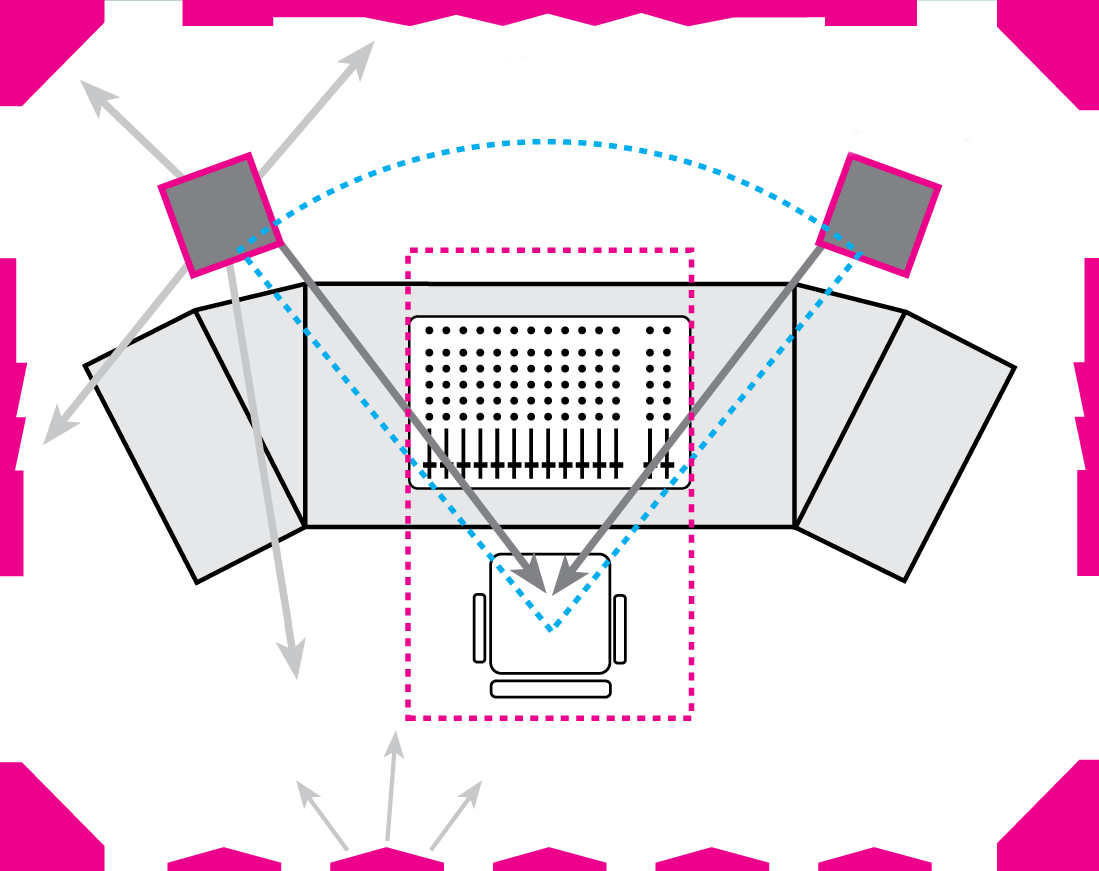The studio acoustics rumors - debunked

Building acoustic modules yourself is cheaper
Of course you can buy materials yourself to build acoustic modules, simple absorbers or bass traps in particular are technically feasible for many people. If you are really talented and have good tools available, they can even look good. If you consider the planning and production time and factor in your own working time, you get a more realistic price. Should you have a lot of free time, DIY can certainly be a fulfilling project. But of course it is not fair to compare the pure material value. In addition, diffusers, pressure-based bass traps and other more complex modules are of course not so easy to build yourself.
A final notable difference is of course the expert advice and reliability of commercial modules. A tested commercial module offers a defined performance in contrast to self-build projects.
Carpets, curtains and other furniture are absorbers
First of all, of course curtains, carpets, pillows, furniture and the like absorb sound. However, this absorption always starts relatively high in the frequency spectrum; curtains or carpets, for example, only have an effect in the upper mids or highs. Couch or armchair furniture bend sound and also absorb somewhat lower, nevertheless they do not replace bass traps, for example. If we set up a room with furniture, it calms down acoustically, the reverberation (especially in the upper frequency range) is reduced and the room sounds more pleasant.
When it comes to monitoring, i.e. professional listening, the range from 20Hz to 5kHz is particularly relevant, so you can‘t replace real absorbers and bass traps with furniture, but when planning a room with a lot of carpet and curtains, I would proceed somewhat differently in order not to absorb the treble too much.
A shelf (with books or plates) serves as a diffusor
Probably one of the oldest and most persistent rumors about room acoustics. Let‘s first look at what makes a diffuser: diffusers are made of sound-reflecting materials, are based on a mathematical sequence and are characterized by varying indentations/crevices and openings that follow that sequence. A shelf only meets one of these requirements, it is made of reverberant materials. Now it is often claimed that by placing books or CD‘s or records the shelf becomes a diffuser. This is not the case, of course, not only because nothing has been calculated, but also because distances and recesses would have to be completely different to form an effective diffuser that works over a wide frequency range. If you look at diffusers, it quickly becomes clear why this is the case.
Plants act like diffusers
In fact, when you look at the definition of a diffuser, that‘s not possible either. However, there is research on the subject that proves that plants have an absorbent effect and lower the reverberation time in rooms. Of course, plants are not acoustic modules either, but offices, living rooms, etc. can have an acoustically beneficial effect on them.
Every room needs diffusers or a lot of diffusion
Pure diffusion just doesn‘t make sense in many rooms, especially if the rooms are not large enough. On the one hand, some types of diffusers like QRD diffusers have certain minimum distances that should be respected, on the other hand, most reflections in small rooms are early reflections. Treating these with diffusion is not conducive in a studio context. Ideally, early reflections should be absorbed, using diffusers affects these early reflections but does not remove them. Thus the original signal, i.e. the sound of our loudspeakers, is influenced. One often reads that diffusion makes rooms seem „bigger“. This refers mainly to the fact that in the back area of the room, reflections are delayed by diffusion. This means that the reflections reach us later than would be expected for a room of this size. Our brain has a good sense for this. So the effect is there for now, but it does not work in small rooms, because there is not enough space for diffusion to work properly. So making small rooms look bigger with diffusion is a myth.
Symmetry is bad
Symmetry is clearly the key. People like to say that symmetry is problematic, but this is fundamentally wrong. Without symmetry, linear monitoring is absolutely impossible. So in many situations, it‘s a matter of creating the symmetry that doesn‘t exist.
Windows only cause problems
Windows are always the least problematic behind the speakers. With most speakers, only low frequencies, at most lower mids, radiate behind the speaker. These penetrate through glass. If there are windows on the side walls and these fall within the range of the early reflections, it makes sense to use free-standing modules called gobos here. If the window is further back in the room, it is often possible to equip only the wall opposite with modules. Windows on the back wall should ideally be avoided.
Want more? Get more!



Subscribe to the digital edition of BEAT Magazine via Plugins-Samples.com and get more gear, in-depth workshops, reviews and 11 GB exclusive plugins and new sounds with every monthly issue!
Subscribe to Beat Magazine for only 4.99€ per month
